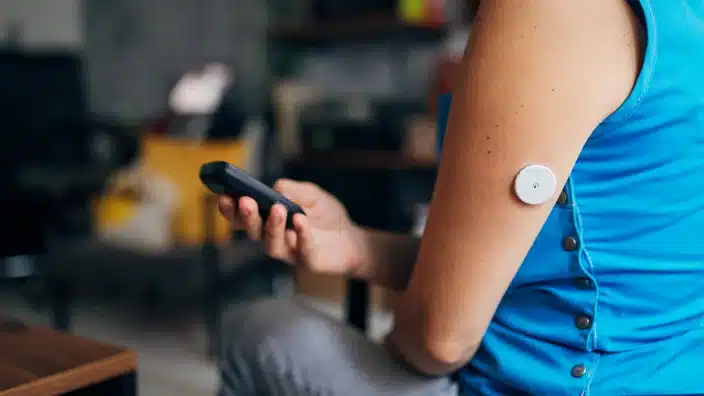Blood sugar management is essential for diabetics. Fortunately, technology has come a long way, offering various blood sugar monitoring devices beyond the traditional finger-prick test. This blog explores some of the latest advancements in this field, empowering you to make informed choices about your diabetes care.
Traditional Blood Glucose Meters
These remain a cornerstone of diabetes management. They involve pricking your finger to draw a blood droplet, placing it on a test strip, and inserting the strip into a meter for a reading. While simple and affordable, they require multiple daily finger pricks, which can be inconvenient and even painful for some.
Flash Glucose Monitoring Systems (FGM)
These devices offer a less invasive approach. A small sensor is inserted under the skin, typically on the arm, and remains there for a specific duration (usually 10-14 days). The sensor measures interstitial fluid glucose levels, which closely correlate with blood sugar. You can scan the sensor with a reader or smartphone app to get a glucose reading instantly, eliminating finger pricks. Popular FGM systems include the FreeStyle Libre and Dexcom G6.
Must Read The Power of Magnetic Gel for Accelerated Diabetic Wound Healing
Continuous Glucose Monitoring (CGM) Systems
CGMs take blood sugar monitoring a step further. They work similarly to FGMs, but the sensor transmits data wirelessly to a receiver or smartphone app every few minutes, providing a continuous stream of glucose readings throughout the day and night. This allows for a more comprehensive picture of your glucose trends and fluctuations, empowering you to make informed decisions about diet, exercise, and medication. Popular CGM systems include the Guardian Connect and Eversense.
Advantages of Newer Devices
- Reduced finger pricking: These devices significantly reduce or eliminate the need for finger pricks, improving comfort and reducing the risk of infection.
- Continuous monitoring: CGMs provide a wealth of data, enabling you to identify patterns and trends in your glucose levels, leading to better management.
- Improved accuracy: Newer devices offer high accuracy and reliability, providing peace of mind.
- Integration with other tools: Many devices connect with smartphones and diabetes management apps, allowing you to track data, set reminders, and share information with your healthcare team.
Read Guide about Wegovy Dosage Guide: The Best Way For Weight Loss
Choosing the Right Device
The ideal device depends on your individual needs and preferences. Consider these factors:
- Complexity: Traditional meters are straightforward, while CGMs require learning and maintenance.
- Insurance coverage: Check with your insurance provider regarding coverage for specific devices.
- Lifestyle: If you are active or have unpredictable glucose levels, a CGM might be beneficial.
- Cost: While FGMs are generally less expensive, CGMs can be costly due to sensor replacements.
Beyond the Latest Blood Sugar Monitoring Devices
Remember, even with the latest technology, self-monitoring is just one aspect of diabetes management. It’s crucial to:
- Maintain a healthy lifestyle: This includes a balanced diet, regular exercise, and adequate sleep.
- Consult your doctor regularly: Discuss your blood sugar goals, treatment plan, and any concerns you have.
- Adhere to your medication regimen: Take your medications as prescribed by your doctor.
Conclusion
The landscape of blood sugar monitoring is constantly evolving. From traditional meters to sophisticated CGMs, various options cater to diverse needs. By understanding the latest advancements and considering your circumstances, you can choose the device that empowers you to manage your diabetes effectively and live a healthier life.


